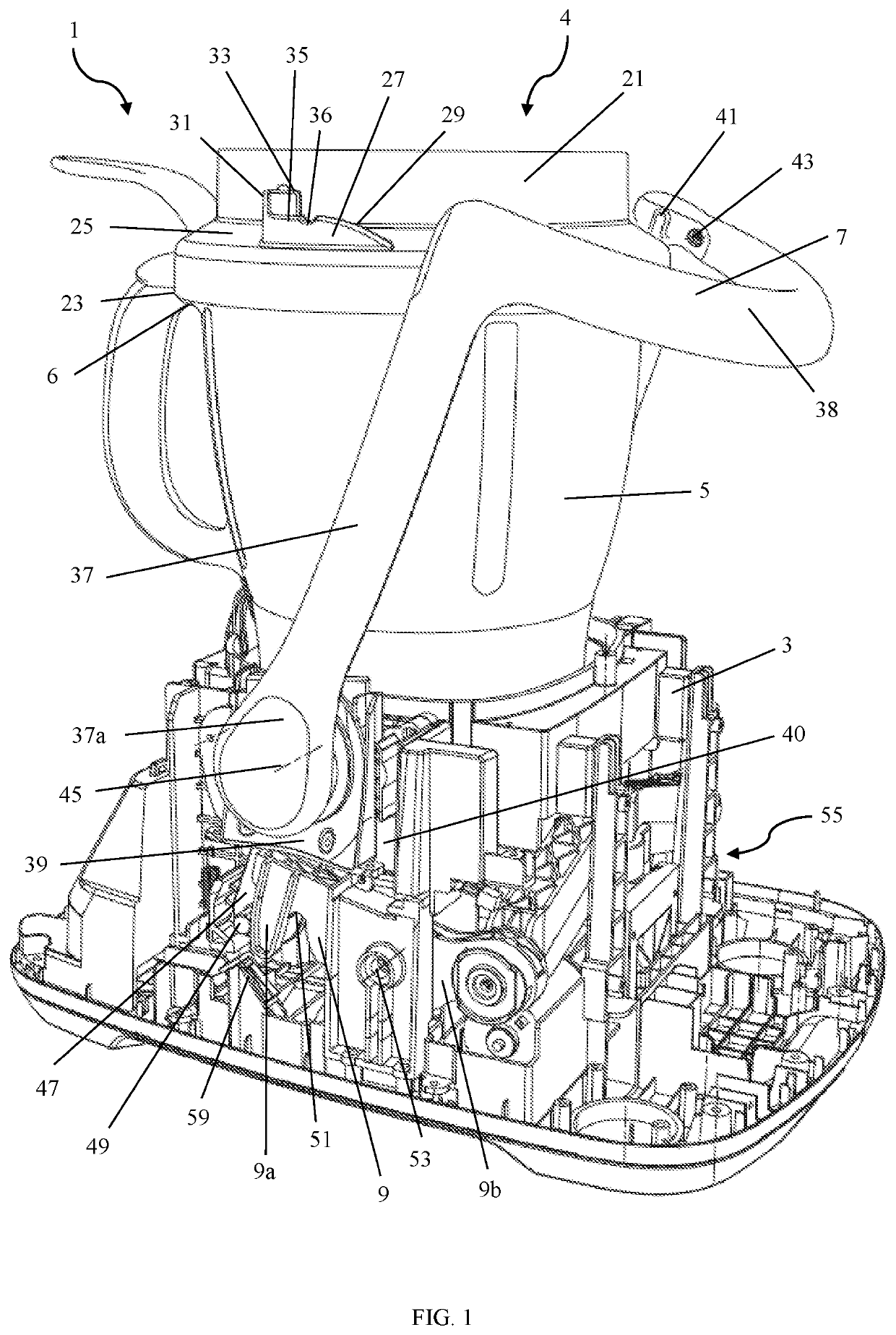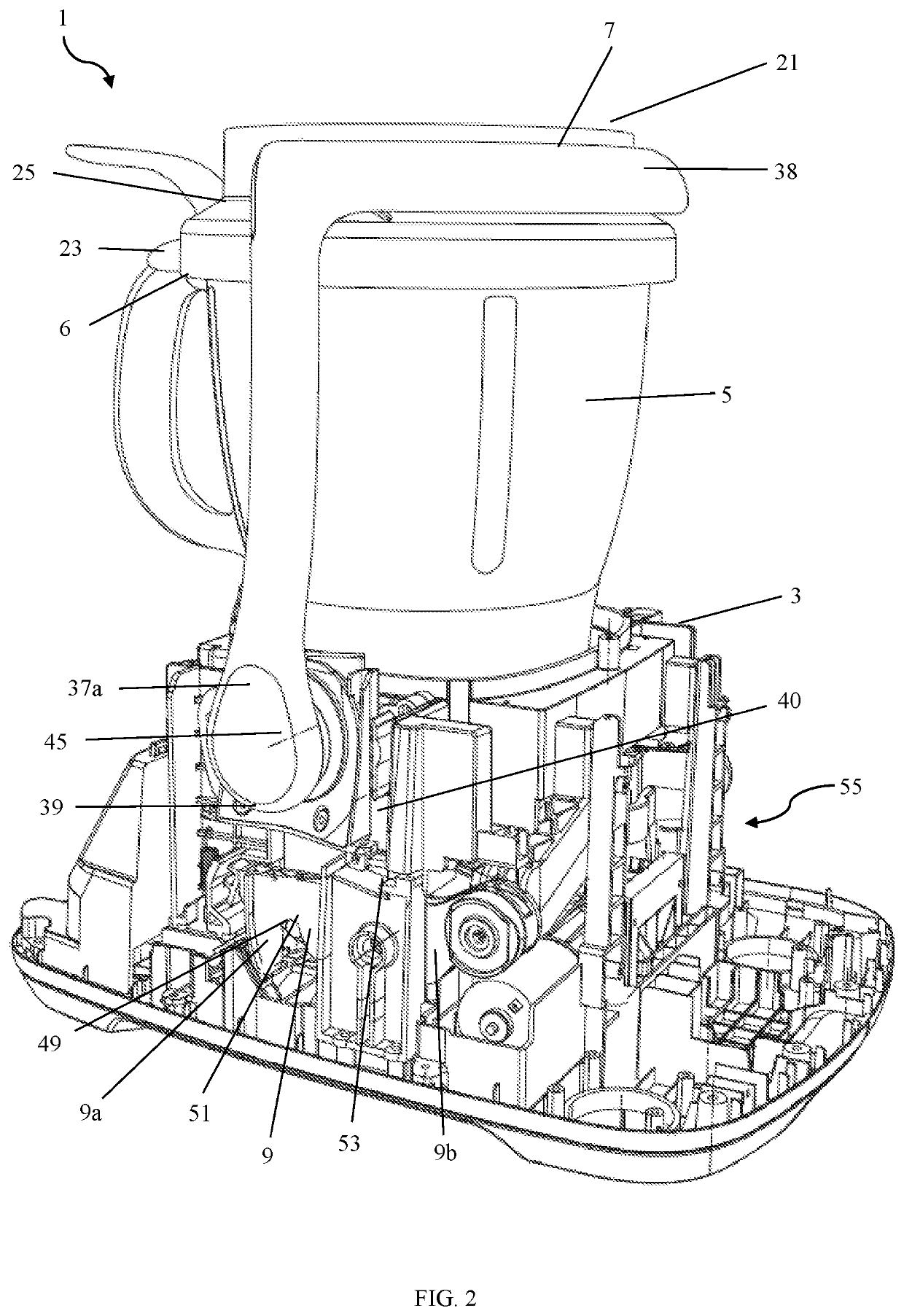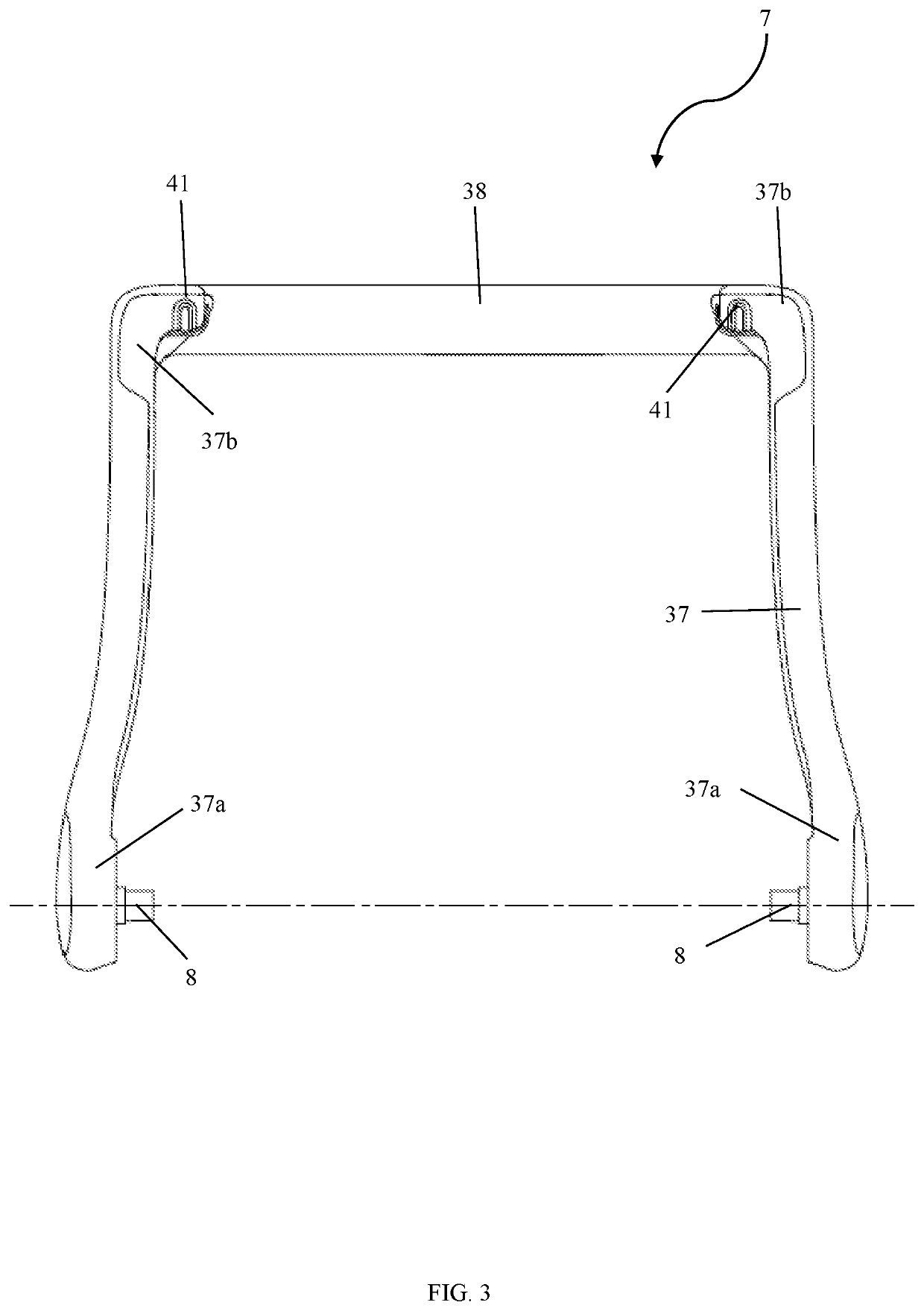Locking mechanism
- Summary
- Abstract
- Description
- Claims
- Application Information
AI Technical Summary
Benefits of technology
Problems solved by technology
Method used
Image
Examples
second embodiment
[0197]the kitchen device 101 is shown in FIGS. 11-40. As shown in FIG. 11 the device 101 has a locking mechanism 104, the locking mechanism 104 comprising a retaining arm 107 attached to a body 103 of the kitchen device 101 and movable between a free position shown in FIG. 16 and a retaining position shown in FIG. 18. As shown in FIG. 12, the kitchen device 101 has a vessel 105 providing an interior space and having a vessel rim 106 surrounding an opening 105a of the space. The kitchen device 101 has a main motor 115 and an agitator 115a coupled to the main motor 115 to process ingredients in the vessel 105. In this embodiment, the kitchen device 101 also has a heating element 115b in thermal communication with the vessel 105 to heat ingredients in the vessel 105. The kitchen device 101 also has a lid 121 to engage the vessel rim 106 to close the opening 105a.
[0198]As seen in FIG. 11, the locking mechanism 104 also includes a securing assembly 108 comprising a securing member, pref...
third embodiment
[0219]the kitchen device 201 is shown in FIGS. 41-46. The kitchen device 201 is similar to the kitchen device 101. However, the locking mechanism 204 of the kitchen device 201 includes a securing member, preferably a latch 209, mounted on a latch pin 210. The latch pin 210 defines a second axis 210A, as shown in FIG. 46. The latch 209 is pivotable about the second axis 210A between a securing position, shown in FIGS. 42 and 45, and a free position, shown in FIGS. 44 and 46. When the latch 209 is in the securing position a key 216 of the latch 209 engages a slot 214 in an extension arm 247 of a retaining arm (not shown). The engagement of the key 216 with the slot 214 prevents movement of the retaining arm thereby securing the retaining arm in a secured retaining position.
[0220]The latch 209 is biased towards the free position by a latch spring 211. In other contemplated embodiments, the latch spring 211 may be a leaf spring or a torsion spring, which may provide space savings. The l...
fourth embodiment
[0223]the kitchen device 301 is shown in FIGS. 47 and 48. The kitchen device 301 is similar to the kitchen device 201. However, the locking mechanism 304 of the kitchen device 301 includes a solenoid 312. The solenoid 312 is adapted to apply force and move a pin 309 from a free position, shown in FIG. 47, to a securing position, shown in FIG. 48. In the securing position the pin 309 engages a slot 314 in an extension arm 347 of a retaining arm 307, when the retaining arm 307 is in a retaining position as shown in FIGS. 47 and 48. Preferably, the movement of the pin 309, and the direction of the slot 314, is parallel to an axis about which the retaining arm 307 pivots. The engagement of the pin 309 with the slot 314 prevents movement of the retaining arm 307 from the retaining position.
PUM
 Login to View More
Login to View More Abstract
Description
Claims
Application Information
 Login to View More
Login to View More - R&D Engineer
- R&D Manager
- IP Professional
- Industry Leading Data Capabilities
- Powerful AI technology
- Patent DNA Extraction
Browse by: Latest US Patents, China's latest patents, Technical Efficacy Thesaurus, Application Domain, Technology Topic, Popular Technical Reports.
© 2024 PatSnap. All rights reserved.Legal|Privacy policy|Modern Slavery Act Transparency Statement|Sitemap|About US| Contact US: help@patsnap.com










